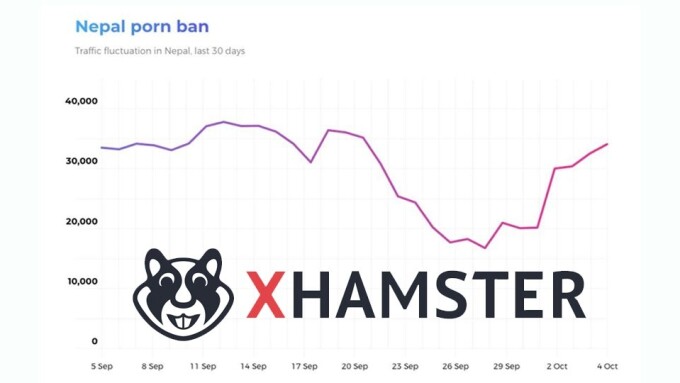KATHMANDU, Nepal — Several weeks after the government of Nepal ordered more than 24,000 adult entertainment sites blocked, data from xHamster.com is showing a rebound after a slight dip in traffic.
“Anytime you push a legal industry underground — one with billions of users — you push legal users into those underground spaces as well,” said Alex Hawkins, xHamster’s vice president. “Unlike other bans, porn bans may have the opposite effect, pushing apolitical citizens into networks that bypass government blockades.
“Attention censors in Nepal, the U.K. and elsewhere: When you attempt [to] ban us, users immediately increase their use of web-based proxies, like VPNs.”
Hawkins said that millions of users in countries where xHamster is technically blocked — including Nepal, Thailand, Turkey and the United Arab Emirates — still find ways to access the site.
He noted that in 2013, when Britain mandated a so-called opt-in measure that required users to obtain access to porn their ISPs, traffic to xHamster from British users increased.
In their recent mandate, political leaders of Nepal — a landlocked country in South Asia sharing its borders with China in the north and India on three other sides — ordered officials from all of the country’s 115 ISPs to follow orders to cut access to porn sites or face fines and possible five-year jail sentences.
Nepal issued a ban of online adult content in 2010, but authorities shifted priorities and ISPs relaxed their filters. At the time, only 200 adult sites were blocked.
Explaining the rationalization of its current ban, the Nepal government said that "easy access to porn and vulgar content through the internet has affected our social values and social harmony and it has encouraged sexual violence.”
Critics of the ban, however, have questioned whether there was any link between online porn and Nepal’s crime numbers. The same critics also wonder whether it’s even possible to prevent users from accessing porn sites, considering the profusion of firewall-evading software.







